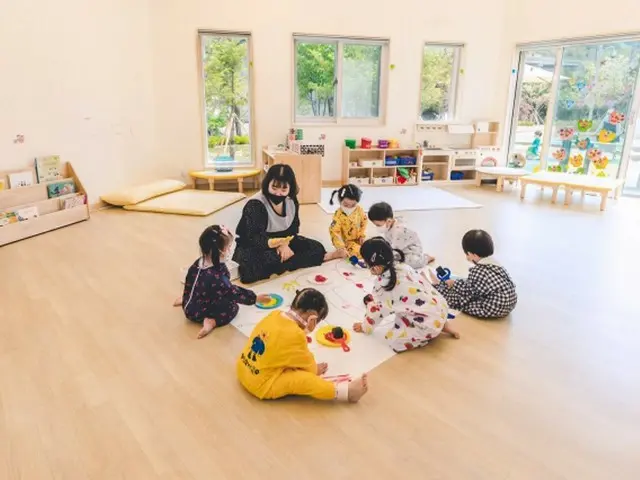On the 28th, the government's official statistics on education and childcare were compiled, showing that the number of children attending daycare centers and kindergartens nationwide last year was 1.5 million.
The total number of nursery schools was 37,395, down 5.3% from the previous year in 2022 (39,485).
The number of nursery schools and kindergartens was 52,568 in 2014, a 0.2% increase from the previous year, and has since decreased for nine consecutive years.
In particular, compared to 10 years ago in 2013 (52,448 locations), the number has dropped sharply by 15,053 locations (28.7%).
The decline in the number of nursery schools and kindergartens means that more of these institutions are closing than opening.
This is thought to be because the number of nursery schools and kindergartens that are struggling to operate are closing due to the effects of the coronavirus pandemic.
Under current law, kindergartens are open to children from the age of three until they enter elementary school, while daycare centers are open to preschool children with no age limit.
Last year, there were 28,954 nursery schools, down 6.4% from the previous year (30,923), to just under 30,000.
The number of home daycare centers, which are primarily attended by infants aged 0-2, has fallen by 54.8% (from 23,632 centers to 1,000) over the past 10 years, the largest drop over the past 10 years.
The number of daycare centers decreased by 10,692 (10,000 places), followed by private (39.8%), corporations and organizations (36.5%), social welfare corporations (16.2%), and cooperatives (3.9%).
On the other hand, the number of public universities (2,332 to 6,187) increased by 165.3%, and the number of workplaces (619 to 1,308) also increased by 111.3%, showing a stark contrast.
Last year, the number of kindergartens was found to be 8,441, down 1.4% from the year before (8,562), and down 2.7% from 2013 (8,678).
By type, the number of private kindergartens fell 19.3% from 4,101 in 2013 to 3,308 last year. In contrast, the number of public daycare centers increased 12.2% (from 4,574 to 5,130).
The number of national nursery schools (3 to 3) remained unchanged. The decrease in nursery schools and kindergartens is inevitable due to the declining birthrate. However, if the number decreases rapidly, it will affect the education and childcare environment for infants and young children.
The government is poised to prevent this vicious cycle and eliminate concerns about the child-rearing environment by integrating early childhood education and childcare (the Ministry of Education and the Ministry of Health and Welfare are separated into two departments, namely, the Ministry of Education and the Ministry of Health and Welfare).
An official from the Ministry of Education said, "The number of private nursery schools and kindergartens is decreasing, as they are finding it difficult to operate due to the declining birthrate. On the other hand, the number of public nursery schools and kindergartens, which parents prefer, is increasing.
"The number of national and public institutions has increased due to the enrichment policy," he explained.
2024/07/28 20:47 KST
Copyrights(C) Herald wowkorea.jp 83

